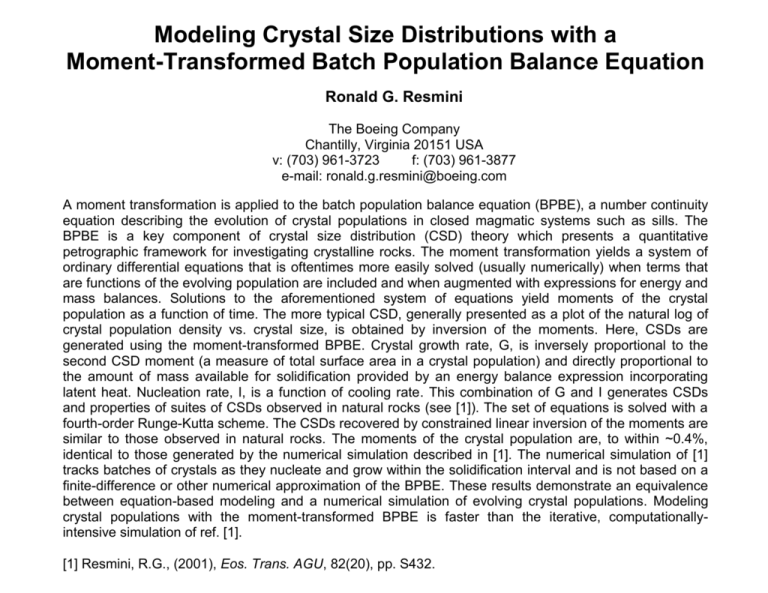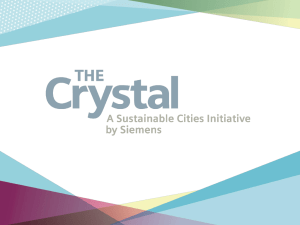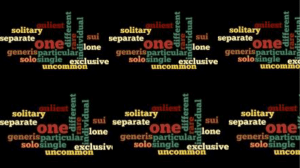Modeling Crystal Size Distributions with a Moment-Transformed
advertisement

Modeling Crystal Size Distributions with a Moment-Transformed Batch Population Balance Equation Ronald G. Resmini The Boeing Company Chantilly, Virginia 20151 USA v: (703) 961-3723 f: (703) 961-3877 e-mail: ronald.g.resmini@boeing.com A moment transformation is applied to the batch population balance equation (BPBE), a number continuity equation describing the evolution of crystal populations in closed magmatic systems such as sills. The BPBE is a key component of crystal size distribution (CSD) theory which presents a quantitative petrographic framework for investigating crystalline rocks. The moment transformation yields a system of ordinary differential equations that is oftentimes more easily solved (usually numerically) when terms that are functions of the evolving population are included and when augmented with expressions for energy and mass balances. Solutions to the aforementioned system of equations yield moments of the crystal population as a function of time. The more typical CSD, generally presented as a plot of the natural log of crystal population density vs. crystal size, is obtained by inversion of the moments. Here, CSDs are generated using the moment-transformed BPBE. Crystal growth rate, G, is inversely proportional to the second CSD moment (a measure of total surface area in a crystal population) and directly proportional to the amount of mass available for solidification provided by an energy balance expression incorporating latent heat. Nucleation rate, I, is a function of cooling rate. This combination of G and I generates CSDs and properties of suites of CSDs observed in natural rocks (see [1]). The set of equations is solved with a fourth-order Runge-Kutta scheme. The CSDs recovered by constrained linear inversion of the moments are similar to those observed in natural rocks. The moments of the crystal population are, to within ~0.4%, identical to those generated by the numerical simulation described in [1]. The numerical simulation of [1] tracks batches of crystals as they nucleate and grow within the solidification interval and is not based on a finite-difference or other numerical approximation of the BPBE. These results demonstrate an equivalence between equation-based modeling and a numerical simulation of evolving crystal populations. Modeling crystal populations with the moment-transformed BPBE is faster than the iterative, computationallyintensive simulation of ref. [1]. [1] Resmini, R.G., (2001), Eos. Trans. AGU, 82(20), pp. S432.











